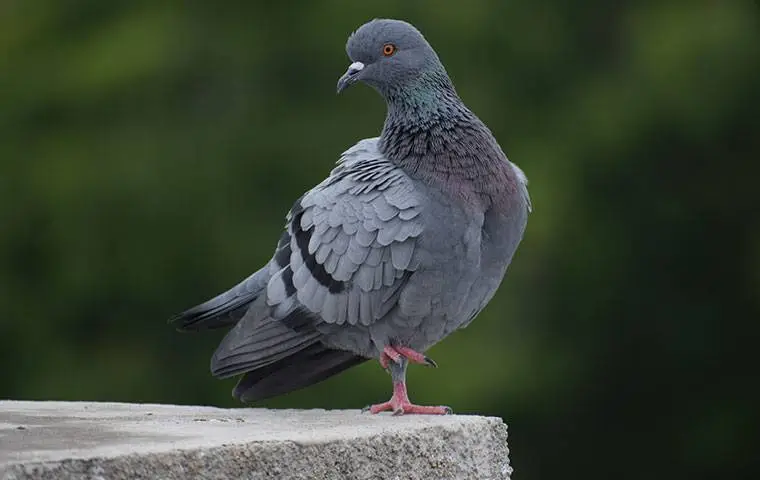Pigeon overcrowding has gotten so bad in recent years in cities all around the world, including New York and Las Vegas, that people now consider them to be just as much of a pest as rats, mice, and insects like cockroaches and ants.
Regarding urban pigeon populations, city people hold differing opinions. Some people feed the birds because they adore them. Some people hate them and have no trouble classifying them as rodents. Whatever their feelings about them, city people have to deal with sizable pigeon populations. The following are the causes of the dramatic increase in pigeon populations around Las Vegas and other cities.
Natural Setting
Pigeons are not native to any part of the world, but according to a Las Vegas pigeon removal service, they have made their way there. The remarkable flexibility and durability of pigeons were highlighted by Charles Darwin in his well-known essay, "On the Origin of Species," which presented his theories of natural selection and evolution. Indeed, Darwin found it fascinating that a single pigeon could give rise to almost 300 different species.
Before people started engaging in agriculture and industry, rock pigeons would build their nests on cliffs, usually near the shore. Due to their difficult living circumstances, these cunning animals had limited lifespans until they realized there were simpler methods to exist. They started to imitate human settlement patterns, seeking for safer nesting grounds where they would be more protected from innate predators.
Pigeons discovered the ideal environment when people started residing in big cities with plenty of structures. They could make their nests safely hidden away from harm under the eaves of these buildings or on their roofs. The pigeons acclimated themselves to a new natural environment that was brimming with comforts and safeguards that provided ideal circumstances for breeding. Pigeons thrive in the mild environment of Las Vegas.
Reproductive Behaviors

Compared to their country relatives, urban pigeons spawn more frequently. Pigeons are still seriously endangered when left to live in the wild. However, because there is nothing to stop them from reproducing, pigeons living in cities are prolific breeders. Pigeons mate for life, and at six months of age, they are prepared to begin reproducing.
As many as eight breeding cycles might occur annually for an average urban pigeon couple. Every time they procreate, most female pigeons lay and birth two offspring. This implies that one pair may be in charge of bringing 16 pigeons into the area each year. Every one of those sixteen pigeons is prepared to give birth to sixteen other pigeons in six months. The causes of the pigeon population expansions in urban areas become obvious with this breeding rate.
Experts think that breaking the reproductive cycle is the best strategy for controlling pigeon numbers. Thus, birth control products for pigeons are added to the food source inside a flock. As a result, female pigeons produce eggs that do not hatch, which can cause a 50% decrease in pigeon populations in a given region in less than a year.
Provision Of Food And Water
Pigeons inhabit the easy streets of metropolitan areas. Because they are skilled scavengers, they always have access to food and water. Pigeons get their food from the humans that live among them, whether it's from abandoned hotdog buns or from standing pools of water. Nothing appears to bother these birds' digestive tracts, as they are not beyond rummaging through open trash cans in search of food.
As previously noted, pigeons take advantage of the perfect breeding conditions provided by an abundance of food, water, and safe nesting places by procreating in large numbers. All these needs are met in cities, which encourages overbreeding and the ensuing population growth.
Read Also: 8 Rottweiler Health Issues What You Need To Know As A Dog Guardian
Absence Of Predators

Pigeons are members of a food chain, just like all other species, and are preyed upon by their natural predators. The sole defense available to pigeons against predators is flight. Pigeons lack the necessary tools to repel predators. When it comes to dealing with avian predators like owls, hawks, and falcons, this is not a good approach.
Land-dwelling predators of pigeons include raccoons, foxes, ferrets, and snakes. But these creatures don't usually choose to live in cities as their home. Once a place is occupied by humans, they usually relocate to another area. If they don't, they are either killed or caged to keep them away from populated areas. Because pigeons are not native to every region, there are frequently insufficient natural predators to keep the population of pigeons at manageable levels.
Getting Around
During the First and Second World Wars, military forces employed pigeons to deliver communications due to their strong homing capabilities. Even when they are captured and released far from their home, they use their powers to get back there.
Since pigeons are such good navigators, pigeon racing and homing have gained popularity across a wide range of international borders. They're difficult to get rid of since they keep popping up like bad pennies.








